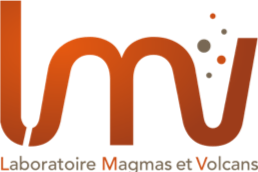Early differentiation and core segregation (see Primitive Earth working group)

Solidus and Liquidus Curves for the chondritic mantle (black) compared to the adiabats (dashed lines) of the magma ocean. From Andrault et al. (2011).
Crystallization of magma oceans. Up to recently, our knowledge on the melting behavior of geological materials at high pressure was based on the extrapolation of experimental data obtained at moderate pressures. However, the solidus and liquidus curves are critical for understanding the process of magma ocean crystallization and the formation of geochemically distinct reservoirs inside the Earth. The melting curves are also important in the context of Earth’s present-day thermal situation, for assessing the possibility for melting at the core-mantle boundary, including the generation of geochemical heterogeneities at the origin of mantle plumes.
We have experimentally determined the location of the solidus and the liquidus boundaries for a chondrite-like mantle composition and for a basalt composition. In addition, we have determined the nature of the phases present in the melting interval, and obtained mineral-melt partitioning data for iron. The implications are the following:
(i) It is unlikely that the Earth was totally molten over long periods of time because the implied surface temperature (potential temperature) would be too elevated (Andrault et al., 2011).
(ii) The melt produced by melting of a chondrite-like mantle is less dense than the residue. Therefore, it should rise toward the surface during the crystallization of the magmas ocean (Andrault et al., 2012).
(iii) The present-day temperature at the core-mantle boundary is high enough to cause melting of subducted basaltic crust carried by slabs in case they reach the bottom of the mantle. This process could be the cause of some observed seismic anomalies (Andrault et al., 2014).
Determination of the composition of low-degree melts in the upper mantle

Trapp for small degree of partial melts. Here, the melt is trapped in a crack in the graphite capsule during piston cylinder experiment. From Laporte et al. (2004).
Melting of heterogeneous mantle. Technical developments performed by our group allowed for extraction of very low-degree melts from mantle-like compositions in the presence of H2O or CO2 (Lambart et al. 2013 ; Sorbadère et al. 2013 ; Condamine et Médard 2014). The major results are that (1) mantle very low-degree melting yields silica-rich liquids and (2) pyroxenite presence plays a key-role on mantle melting. We have analyzed very low-degree (down to 0.9 wt% melting) melt compositions produced from anhydrous fertile mantle composition between 1.0 and 1.5 GPa. The liquids are enriched in silica and alkali elements, and depleted in MgO, FeO and CaO. The melts have compositions of trachy-andesites and phonolites (Laporte et al. 2014). Our results suggest that some phonolites observed in nature could be the direct product of mantle melting, a theory that had been considered in the 1980’s and 90’s but that was awaiting experimental confirmation. Melting of a metasomatized mantle-like composition (with amphibole and/or mica) between 1 and 3 GPa also yields silica-rich melts (up to 64 wt%), with the silica-rich character persisting at higher melt fractions than for the anhydrous case (Condamine & Médard 2014). The experimental melts share the characteristics of natural potassic primary magmas that are observed at convergent settings (shoshonites, leucitites), implying that the source of those magmas is a hybrid phlogopite-bearing mantle containing an additional crustal component. For the melting of a source consisting of a mixture of hydrated pyroxenite and peridotite in the context of arc magmatism our results confirm that primary silica-undersaturated melt generation requires clinopyroxenite to be present (Sorbadère et al., 2013). For similar pressure and temperature conditions, pyroxenites and peridotites yields liquids of similar compositions. Our results allow for quantifying pyroxenite melt productivity and evaluating their contribution to magma generation at mid-ocean ridges and at hot spots settings (Lambart et al., 2013). Furthermore, melt – wallrock interaction experiments were performed, in order to assess the evolution of the liquid and the mantle during melt migration (Lambart et al., 2012).


